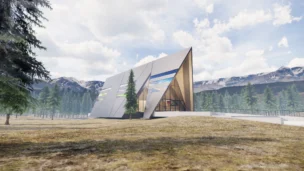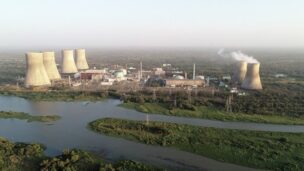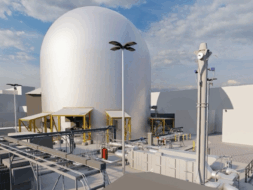Soaring electricity demand, a complete AP1000 design, and growing recognition of the existing nuclear fleet’s role in slashing carbon emissions prompted the DOE to update its advanced nuclear report.
The advanced nuclear report is part of the department’s Pathways to Commercial Liftoff series, which explores how and when key clean energy technologies could achieve widespread adoption in an effort to steer public and private investment. The DOE launched its nuclear report in 2023 and updated it last month in response to the rapidly changing nuclear landscape.
Here’s what’s new:
Data centers
The US will now need a minimum of 700–900 GW of additional renewable power by 2050 to reach net-zero emissions and keep pace with load growth projections.
The surge in demand is driven by the rising energy consumption of AI and high-performance computing, which the report estimates could increase total power demand by up to 20% over the next decade. As data centers expand to accommodate AI applications, so does the need for reliable, clean energy to power their 24/7 operations and high uptime needs. Nuclear energy is one of the few options capable of meeting such demand, creating a market of customers willing to support new investment in nuclear power.
“Unlimited power!” Or…triple the power
US nuclear capacity has the potential to 3x from today’s ~100GW to ~300 GW by 2050, according to the report.
Do I hear 60 GW? Initial research cited in the report suggested a significant portion of this growth could come from existing and recently retired nuclear plants. The DOE found that 41 sites have space for one or more large light-water reactors, potentially adding 60 GW of capacity to the grid.
How about 95 GW? This capacity could grow to 95 GW when factoring in sites capable of hosting smaller advanced reactors of up to 600 MW apiece.
Another 100+ GW? Coal plants slated for retirement could be transformed into new nuclear facilities, potentially contributing 128–174 GW of new capacity by leveraging the existing workforce and some of the infrastructure.
Completed AP1000
The completion of Vogtle Units 3 and 4 has established the site as the largest clean energy generator in the US. According to the report, many of the costs incurred during Vogtle’s construction are unlikely to be repeated in future AP1000 projects. Vogtle’s construction began with an incomplete design, an immature supply chain, and an untrained workforce—issues that have been addressed.
The next AP1000 projects are also expected to see greater cost reductions through provisions in the Inflation Reduction Act, including an investment tax credit of 30–50% and DOE loans up to 80% of eligible project costs.




